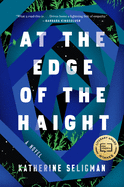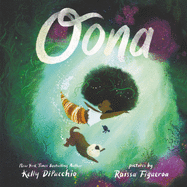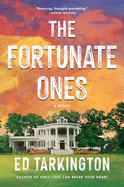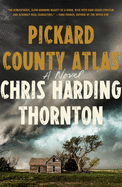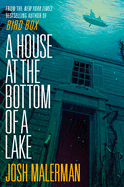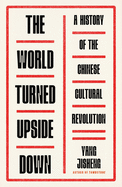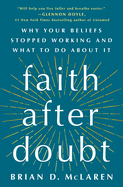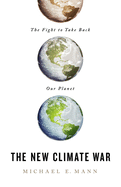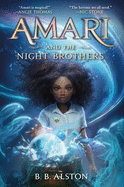Tuesday, January 19, 2021
One exquisite pleasure I have in the gloom of winter is simmering a big pot of soup on the stove. What satisfies the body as deeply as a flavorful, well-balanced broth?
 On the simpler end of the spectrum is Jamie Oliver's Super Comforting Veggie Gumbo, a recipe found in Ultimate Veg (Flatiron, $35). This book is so handy for anyone looking to cook hearty vegetarian and vegan dishes, and this gumbo offers home chefs a springboard into bigger and broader flavors. Building from a loose roux with onion, celery and bell pepper, Oliver tosses in chickpeas and okra, but suggests any variety of seasonal vegetables as well. I stirred in some pumpkin back in the fall; more recently, scallops!
On the simpler end of the spectrum is Jamie Oliver's Super Comforting Veggie Gumbo, a recipe found in Ultimate Veg (Flatiron, $35). This book is so handy for anyone looking to cook hearty vegetarian and vegan dishes, and this gumbo offers home chefs a springboard into bigger and broader flavors. Building from a loose roux with onion, celery and bell pepper, Oliver tosses in chickpeas and okra, but suggests any variety of seasonal vegetables as well. I stirred in some pumpkin back in the fall; more recently, scallops!
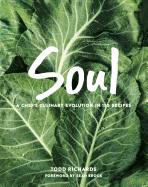 Todd Richards's Collard Greens Ramen from Soul (Southern Living, $35) is another favorite, and requires only a little more effort than the gumbo. Beginning with his recipe for collards, stewed for a couple hours with smoked ham hocks and bourbon, the transformation into mouthwatering bowl of ramen takes little more than hard-boiling some eggs, cooking the noodles and garnishing with scallions, sesame seeds and soy sauce. Once, I traded in the ham hocks for smoked turkey tails; how's that for seasonal flair?
Todd Richards's Collard Greens Ramen from Soul (Southern Living, $35) is another favorite, and requires only a little more effort than the gumbo. Beginning with his recipe for collards, stewed for a couple hours with smoked ham hocks and bourbon, the transformation into mouthwatering bowl of ramen takes little more than hard-boiling some eggs, cooking the noodles and garnishing with scallions, sesame seeds and soy sauce. Once, I traded in the ham hocks for smoked turkey tails; how's that for seasonal flair?
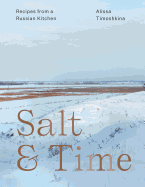 The most involved soup I love is Alissa Timoshkina's magnificent, if iconoclastic, Borsch recipe in Salt & Time (Interlink, $35). I know it sounds extreme, but it is absolutely worth making the broth a day in advance and letting it steep in the fridge overnight. It's an incredible blend of beet, sauerkraut, fennel and dill flavors, further enhanced by fresh veggies roasted just before dinnertime: beets drizzled in pomegranate molasses, kidney beans dusted with smoked paprika, red onions and bell pepper. Top each steaming bowl with sour cream and fresh herbs.
The most involved soup I love is Alissa Timoshkina's magnificent, if iconoclastic, Borsch recipe in Salt & Time (Interlink, $35). I know it sounds extreme, but it is absolutely worth making the broth a day in advance and letting it steep in the fridge overnight. It's an incredible blend of beet, sauerkraut, fennel and dill flavors, further enhanced by fresh veggies roasted just before dinnertime: beets drizzled in pomegranate molasses, kidney beans dusted with smoked paprika, red onions and bell pepper. Top each steaming bowl with sour cream and fresh herbs.
My tummy grumbles just thinking about it! --Dave Wheeler, associate editor, Shelf Awareness
At the Edge of the Haight
by Katherine Seligman
Katherine Seligman's gripping debut novel, At the Edge of the Haight, explores a community on the edge of a historic setting and on the edge of getting by, with a compelling protagonist and an array of problems to wrestle with.
Twenty-year-old Maddy Donaldo lives in present-day Golden Gate Park with a sort of chosen family. There's Ash, "a skinny upside-down triangle" of a young man. Quiet, gentle, strawberry-blond Fleet has a pet rat named Tiny. Spike-haired Hope talks to everyone; she's good with the tourists, but a bit of an instigator, too. And, most importantly, there's Root, Maddy's devoted dog. Together the friends scavenge food, find shelter, protect one another and navigate their tricky streets. It is Root who leads Maddy into the bushes in the first pages of this absorbing novel, where she stumbles upon a young man taking his last breath, and a man standing over him.
Maddy knows immediately that this sight will haunt her, that she is danger. She's been handed a problem she didn't earn; quickly the death of the boy named Shane follows her. The cops have questions. A man shows up at the local shelter and identifies himself as Shane's father and asks for Maddy's help. She investigates Shane's murder, and along the way alienates her friends and finds herself nudged toward her own past, which she most wants to avoid.
At the Edge of the Haight is told in quiet prose from Maddy's first-person point of view. Seligman's San Francisco is colorful and detailed. Readers are drawn into a challenging world with sympathetic characters, but it is Maddy's internal turmoil that makes this novel memorable. --Julia Kastner, librarian and blogger at pagesofjulia
Discover: In this quietly compassionate novel, a young homeless woman stumbles onto a crime scene on the edge of Haight-Ashbury, and eventually reconsiders how she got there.
The Divines
by Ellie Eaton
Readers of Ellie Eaton's arresting debut, The Divines, should not like Gerry Lake. Gerry is the bratty, coddled roommate of Eaton's protagonist, Josephine; they attend an elite all-female boarding school in England known as St. John the Divine. These girls refer to themselves as Divines, and they consider themselves as such; locals recognize them by their posh accents, trust-funded clothing and the self-important way they flip their hair. But inside St. John, the walls are caving in. The students spend more time chain-smoking and hoarding obscene photographs than actually studying. They chase after men and scoff at townies. These young women refer to one another by traditionally masculine names--Josephine is Joe, Geraldine is Gerry--but these ostensibly powerful titles do nothing to mask their insecurity. Especially Joe's.
Flash forward to the present, where Joe--now referring to herself as Sephine--is happily married. She's trying everything in her power to wash away the Divine that still clings to her, but finds she can't stop thinking about Gerry, who suffered a horrendous accident during their last year as Divines. In her memories of that final year, she returns again and again to the sex, jealousy, cruelty, betrayal and privilege that lead up to Gerry's injury and Sephine's subsequent trauma. Now raising her own daughter, Josephine must reckon with the girl she once was--and the woman she's become. As readers progress through this meticulously plotted story, they'll be surprised to find their loyalties waxing and waning with each new revelation. Readers should not like Gerry Lake. But perhaps she is more of a heroine than Josephine would like her to be. --Lauren Puckett, freelance writer
Discover: A crumbling all-female boarding school becomes the scene of a tragedy when its privileged students turn against one another in this captivating debut.
The Rib King
by Ladee Hubbard
The Rib King is every bit as inventive and original as Ladee Hubbard's confident debut, The Talented Ribkins, finding the tragedy and the bitter humor contained within the American obsession with Black iconography. The novel begins in 1914 with Mr. Sitwell, a member of the all-Black staff that holds together a wealthy white family's household as their fortunes fade. The novel's interest in the connection of race and capitalism is evident at the outset, but the book is equally concerned with the ways narratives are shaped to disguise the sins of the past. Mr. Sitwell begins to lose his signature composure when he discovers a book recounting events disturbingly similar to a horrific incident in his childhood. What follows is one of the many unpredictable turns that makes The Rib King such an exciting read.
The second half of the novel picks up years later, when a caricature of Mr. Sitwell known as "The Rib King" has become the face of a wildly successful rib sauce. The "Rib King" iconography is reminiscent of many real-life examples of brands using racist archetypes like Aunt Jemima to sell products. Mr. Sitwell's transformation into caricature has made him an equivocal figure in the Black community. In one scene, a character argues that Sitwell is "just doing what he's got to, to survive," while another responds that "every time somebody acts a fool trying to slip in through a back door it makes it that much harder for all of us...."
That tension--the lack of clear-cut moral choices for people living under such brutal pressure--drives the book, but never resolves into simple dichotomies. Hubbard shows the monstrously strange methods through which a racist corporate world can recast suffering and injustice into profitable icons. --Hank Stephenson, the Sun magazine, manuscript reader
Discover: The Rib King is a fascinating, unpredictable historical novel that examines the consequences of the American fixation on Black iconography.
The Fortunate Ones
by Ed Tarkington
The families of Nashville's Belle Meade Boulevard may be fortunate, but as the characters in Ed Tarkington's moving second novel (after Only Love Can Break Your Heart) reveal, money does not buy happiness.
In the prologue of The Fortunate Ones, army officer Charlie Boykin is comforting the family of an Iraq war casualty when a TV bulletin announces the suicide of Tennessee Senator Archer Creigh, and Charlie suddenly dissolves in tears. The novel explores the ties between the two men--Charlie from a poor background and Archer to the manor born--leading to this moment of grief.
A struggling waitress, single mom Bonnie Boykin arranges a scholarship to Yeatman, "a rich white boys school," according to 13-year-old Charlie's friends. "Big brother" Archer Creigh introduces Charlie to the world of Belle Meade and Southern graciousness. Bonnie is welcomed as well, with far-reaching effects. Charlie has misgivings; he leaves a funeral for a Black friend's grandmother in his old neighborhood to get to a party "surrounded by Confederate flags in a field of drunken white college students." He's seduced by "the bright and beautiful world," but, facing secrets that reveal a darker story, after Yeatman he flees Nashville.
Years later, Archer entreats him to join his campaign. Observing Archer the candidate and his wife, Charlie's old flame, he notes, "I, looking on from afar, their erstwhile friend and confidant, admire them with both ardor and spite."
Through his first-person narration, readers come to a deeper understanding of Charlie's flawed yet noble character, as he struggles with the conflict between privilege and idealism. --Cheryl McKeon, bookseller, Book House of Stuyvesant Plaza, Albany, N.Y.
Discover: In this well-considered coming-of-age novel set in Nashville, a boy learns that the trappings of wealth hide secrets, and he faces truths about loyalty and idealism.
Pickard County Atlas
by Chris Harding Thornton
In a town with "three dozen jobs, give or take," the history of each Madson, Neb., homestead permeates the land and its denizens. Deputy Harley Jensen patrols every night, "absently tick[ing] off names of passing tracts like reading a plat map in an old atlas." The events at his abandoned childhood farmhouse are inescapable, often reflected in the eyes or words of his community, and Harley always speeds past. But as Chris Harding Thornton's dark and brilliant debut, Pickard County Atlas, opens, Harley pulls in and finds Paul Reddick there.
The Reddicks were scarred by a 1960 tragedy that remains part mystery. Paul, then four, remembers his family only as broken. In the 18 years since, he's been involved in numerous violent events and run-ins with Harley, who likens him to a bad penny, though "you turn up often enough--wrong place, wrong time--you seem less like an omen than a reason."
Thornton immediately sets a country noirish stage, dropping clues that smolder through the pages as she reveals each family's past. Paul's parents are long-divorced and shells of their former selves. Brother Rick is married with a young daughter, his family a tinderbox of desperation. Though the plot appears male-centric, the women are its true, complex heart. Thornton's expert prose and turns of phrase beg for repeat reading ("cooked like those hobos her mother once told her had roasted in a freight car") and the character work is full of depth and detail that astonish; a dazzling display of literary prowess. --Lauren O'Brien of Malcolm Avenue Review
Discover: A middle-aged small-town deputy and one of his young constituents tangle over past events and new secrets, with a long-hidden mystery fueling the fire.
Mystery & Thriller
A House at the Bottom of a Lake
by Josh Malerman
When two awkward teens discover a house at the bottom of a lake, their first date becomes sexually charged at the start of this supernatural thriller by Josh Malerman (Birdbox).
Hoping to get to know one another better, 17-year-olds James and Amelia plan a first date canoeing across a series of small lakes. They paddle, take in the sights, picnic and stumble between what they'd like to say and the fear of being misunderstood. Their stilted banter drops when they notice a graffitied, semi-submerged tunnel that connects to a hidden lake. The couple scrape their canoe through to find a smaller body of water--with a two-story house under the surface. The impossibility of the structure's existence draws them beneath the waves, where they find that, unbelievably, the house is intact. Both feel an ominous presence within the walls, but the fear excites them and they suddenly can't keep their hands off each other. They ignore the hows and whys of their find and the voices in their heads coming from the house. The two return with diving equipment, giving themselves over to whatever supernatural entity is drawing them inside the underwater residence.
Just as A House at the Bottom of a Lake reels in James and Amelia, so will Malerman's writing force readers to plunge the depths of this novel. The author perfectly blends magical realism and abject terror to create "don't go in there!" screaming and "what the hell is that?!" curiosity. House may need multiple readings to peel back all the metaphorical layers packed into this scary story. --Paul Dinh-McCrillis, freelance reviewer
Discover: Two teenagers find a supernatural structure and become dangerously obsessed with each other in this gripping thriller.
History
The World Turned Upside Down: A History of the Chinese Cultural Revolution
by Yang Jisheng, transl. by Stacy Mosher and Guo Jian
The World Turned Upside Down is a detailed, deeply researched history of the Great Proletarian Cultural Revolution, precisely tracking the complex currents and countercurrents that devastated the lives of hundreds of thousands of Chinese citizens from 1966 to 1976. The Cultural Revolution is still a highly sensitive topic in China: journalist Yang Jisheng's lengthy book, translated and pared down from its original immensity, was published in Hong Kong and "cannot be legally sold or circulated in mainland China." Indeed, the book presents a highly unflattering picture of Mao Zedong and the ruling "bureaucratic clique" that, from the author's perspective, "won" the Cultural Revolution at a terrible cost to both ordinary citizens and bureaucrats.
While official histories often pin blame for the chaos and destruction on the rebel factions that proliferated during the period, Yang takes a much more top-down view. The World Turned Upside Down shows that the Cultural Revolution began as Mao's attempt to attack his enemies in the bureaucracy and "clear away obstacles for his envisaged paradise." However, the bureaucratic clique fought back, and Mao's calls for continuous revolution were followed by waves of repression in a constant back-and-forth that paralyzed the economy and resulted in terrible violence.
Yang presents facts and mostly lets them speak for themselves, only occasionally dropping in a personal anecdote (Yang was a student in Beijing and participated when the revolution began). Which isn't to say The World Turned Upside Down lacks perspective: Yang's careful accumulation of facts becomes a moral accounting, providing a model for how rigorous scholarship can penetrate ideology and arrive at something like the truth. --Hank Stephenson, manuscript reader, the Sun magazine
Discover: The World Turned Upside Down is a rigorous, lengthy history of the Great Proletarian Cultural Revolution that may prove to be the definitive account of the upheaval.
Social Science
Land: How the Hunger for Ownership Shaped the Modern World
by Simon Winchester
Except perhaps when the earth shakes, most people don't devote a lot of thought to the ground beneath their feet. That may change for anyone who has the pleasure of reading Simon Winchester's informative and thought-provoking survey Land: How the Hunger for Ownership Shaped the Modern World.
Winchester (Atlantic) admits he became "transfixedly fascinated with the notion of land ownership, and of how such a thing could possibly be," after his first purchase--123 acres of unimproved woodland in upstate New York, in 1999. For all the subject matter his book covers, he is most passionate when it comes to describing how peoples like Native Americans, New Zealand's Maori and Scotland's humble crofters have been ruthlessly ejected from lands they once possessed, though the idea of actual ownership was alien to them. In doing so, he lays bare the injustice of the 1889 Oklahoma land run; the duplicity of the still-disputed Treaty of Waitangi, which established British sovereignty over New Zealand in 1840; and the brutality of the Highland clearances of the 19th century. Winchester is equally instructive when he's describing the massive Dutch project to reclaim land from the North Sea and the catastrophe set off by retired British lawyer Sir Cyril Radcliffe, with his ill-conceived line partitioning India and Pakistan in 1947.
Whether nations, tribes or individuals are coveting it, fighting over it, losing it or gaining it, land will always possess the power to excite the human imagination. One couldn't ask for a more accessible or comprehensive treatment of the subject than Simon Winchester's book. --Harvey Freedenberg, freelance reviewer
Discover: A veteran journalist presents a fascinating survey of the subject of land: how we own it, divide it and try to master it.
Psychology & Self-Help
Faith After Doubt: Why Your Beliefs Stopped Working and What to Do About It
by Brian D. McLaren
In Faith After Doubt: Why Your Beliefs Stopped Working and What to Do About It, Brian D. McLaren (A New Kind of Christianity; A Generous Orthodoxy) explores the effects of doubt on faith, and how doubt can be a tool to strengthen one's faith. McLaren, long appreciated by progressive Christians, begins by talking about how threatening doubts can feel to believers, especially those from very conservative communities. As McLaren says, "It's scary to be a sinner falling into the hands of an angry God, but it can be equally scary to be a doubter falling into the hands of angry believers."
McLaren gently guides readers through the four stages of faith development that he has defined: Simplicity, Complexity, Perplexity and Harmony. Believers in the first stage, Simplicity, honor being right, and "see dissent as a danger to avoid." As doubt begins to creep in, however, believers cycle through varying mini-stages of Complexity and Perplexity, finally ending with Harmony, which seeks holistic inclusion and sees doubt as necessary.
Although McLaren writes from the Christian tradition, Faith After Doubt has appeal for people of all faiths who have ever doubted the status quo or sought a more inclusive path. His thoughtful analysis of how something as intimidating as doubt can be used for the greater good is encouraging and optimistic. Filled with personal stories about pastors and lay people who have shared their doubts with McLaren, Faith After Doubt is both insightful and anecdotal, drawing in a broad range of readers. --Jessica Howard, bookseller at Bookmans, Tucson, Ariz.
Discover: In this thoughtful book, Brian McLaren explores the effects of doubt on faith and how faith can blossom because of--not in spite of--doubt.
Science
The New Climate War: The Fight to Take Back Our Planet
by Michael E. Mann
The New Climate War: The Fight to Take Back Our Planet provides a guide of sorts to the current state of the decades-long debate about climate change, a bitter conflict that pits climate activists against the forces of inaction, and sometimes against each other. Climate scientist Michael E. Mann has been at the forefront of what he calls a war ever since he and his colleagues introduced the influential "Hockey Stick" graph in 1998, demonstrating rapid warming. In the years since, the rules of war have changed, and Mann seeks to offer a suitable battle plan.
As the effects of climate change become increasingly apparent, Mann argues "inactivists" have largely moved from outright climate change denial to more subtle methods. "The forces of denial and delay" have engaged in deflection campaigns, for example, in an attempt to shift responsibility for climate change from corporations to individuals. Inactivists have successfully used online bots, trolls and social media in order to amplify disagreements within the environmental movement. Mann even accuses some activists and writers of playing into the hands of fossil fuel companies and oil-funded governments by engaging in "doomism"--apocalyptic, defeatist rhetoric he finds in books such as The Uninhabitable Earth. Mann makes what could be called a technocratic argument for defeating climate change, standing up for market-based solutions like pricing carbon, which have fallen out of favor in activist circles. Whether or not readers find his arguments persuasive, The New Climate War is an informed, opinionated guide to an ever-changing conflict. --Hank Stephenson, the Sun magazine, manuscript reader
Discover: The New Climate War outlines the current state of the conflict over climate change, offering a veteran climate scientist's opinion on how to combat the forces of inaction.
Children's & Young Adult
Oona
by Kelly DiPucchio, illus. by Raissa Figueroa
Gaston author Kelly DiPucchio and The More the Merrier illustrator Raissa Figueroa dive into the delightful world of Oona, a spirited little mermaid who's "sweet... and a little bit salty." With a penchant for winding up in precarious predicaments, brown-skinned and stripe-tailed Oona and her best friend Otto, a sea otter, spend their days searching for treasures, often discovering the ocean's many hazards instead.
Oona was an imp from birth, when she pursued a pearl right into the mouth of a whale. Now, she always gets the prizes she's hunting--"keys and coins and buttons and bottles. And sometimes... lost glasses"--no matter the danger. Except, that is, for the extra special treasure: the sparkly crown. This is the bounty that eludes Oona because "the crown [is] stuck deep in the rift, and not a pole, or a pail, or the sticky stick of a snail [can] get it unstuck." Oona and Otto's efforts to procure the crown take them face to face with sharks, squids and crabs, all strikingly depicted in Figueroa's charming digital illustrations. The brilliant colors, rich textures and heartwarming playfulness of the art will likely entice young readers to join Oona in her mischief and cheer her on to victory.
DiPucchio offers a final reward in the form of themes of determination, bravery and ingenuity. Her spunky little protagonist and adorable sidekick are a perfect delivery team for valuable lessons cleverly wrapped in a whimsical picture book. It's a sweet, amusing story that will make the perfect addition to any pile of storytime favorites. --Jen Forbus, freelancer
Discover: A darling little mermaid and her sea otter pal find plenty of mischief in their treasure-hunting ocean adventures.
Amari and the Night Brothers
by B.B. Alston
Supernatural creatures are hidden in plain sight in B.B. Alston's exhilarating middle-grade fantasy debut.
Thirteen-year-old Amari Peters is obsessed with discovering what happened to her older brother, Quinton. He had been working for a mysterious organization and then he simply disappeared. Amari knows it's possible he's dead, but she refuses to believe Quinton might be gone. Amari's faith is rewarded when she receives a magical briefcase that contains clues about the double life Quinton was leading. Turns out, he was a special agent working on a confidential assignment for the Bureau of Supernatural Affairs, "the link between the known world and the hidden." He has also nominated Amari to attend an elite summer camp that prepares children to become junior agents in the Bureau. Hoping to learn more about her brother's world, Amari attends the camp and is introduced to the paranormal.
The definitive hook of this narrative is Alston's exceptional skill for world building. Humans work alongside mystical beings in bureaucratic departments such as the Department of Supernatural Health, the Department of the Unexplained and the Department of Good Omens and Bad Fortunes. Amari has a practical, non-magical background that provides a realistic undercurrent to the supernatural elements. While the rapid plot pacing at times detracts from the inventive nuances, fans of the Harry Potter series will likely find much to enjoy in Alston's imaginary Bureau, which features significantly more authentic diversity than Rowling's Hogwarts. Amari stumbles into one capricious adventure after another en route to a stunning conclusion that also lays the track for a sequel to this breakout debut. --Rachel Werner, Hugo House and The Loft Literary Center faculty
Discover: In this fantastical middle-grade read, a strong-willed tween on a quest to find her brother learns she has magical powers.


